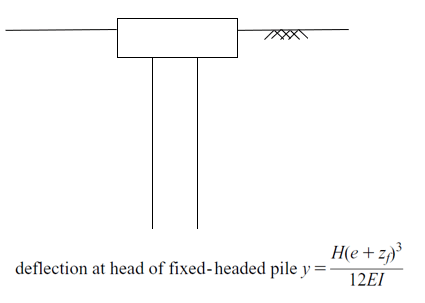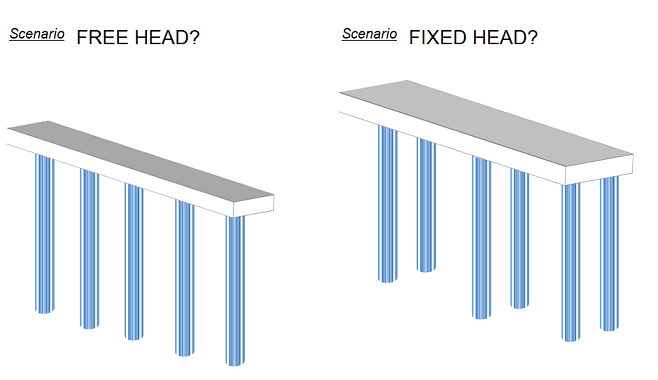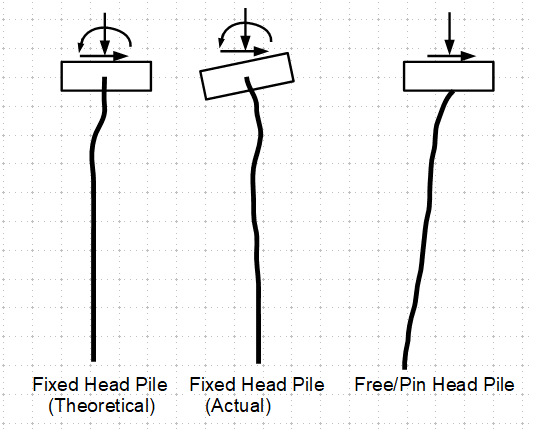I was using the method in Tomlinson & Woodard publication to estimate the lateral deflection of a pile with a pilecap on top.
Firstly, I presume equation 6.21 applies, for a fixed head rather than a free head. I thought perhaps a fixed head may be for a pile within a pile group.
Has anyone seen empirical methods for calculating deflection if pilecap is semi submerged into the soil?

Firstly, I presume equation 6.21 applies, for a fixed head rather than a free head. I thought perhaps a fixed head may be for a pile within a pile group.
Has anyone seen empirical methods for calculating deflection if pilecap is semi submerged into the soil?




